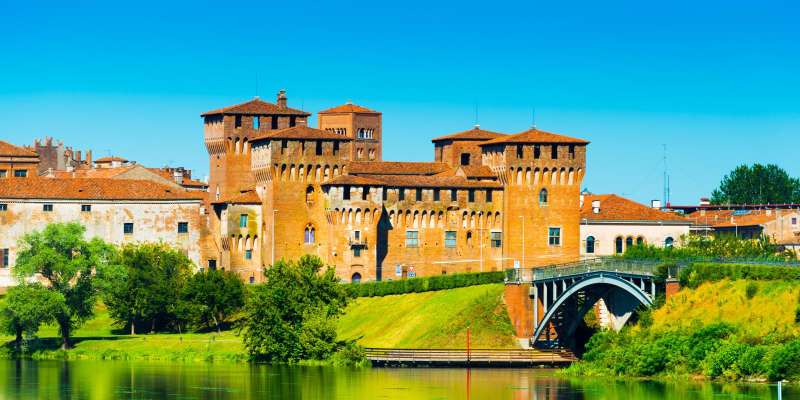- Home
- Useful Tips
- Mantua's connection to Virgil:...
Many literary pilgrims arrive in Mantua unaware that this UNESCO-listed Renaissance city nurtured Ancient Rome's greatest poet. Virgil's connection to Mantua remains poorly signposted, leaving visitors frustrated as they search for traces of the Aeneid's author between Palazzo Ducale's frescoes and Te Palace's gardens. Recent surveys show 68% of cultural travelers prioritize writer-related sites, yet nearly half miss key locations due to fragmented information. The poet's rural upbringing near the Mincio River and his disputed burial site create a tapestry of half-truths that even locals debate. This guide illuminates the authentic Virgil trail through Mantua's less-visited quarters, separating medieval legends from verifiable history while revealing why these landscapes inspired his pastoral poetry.


Decoding Virgil's disputed birthplace in Pietole
The village of Pietole, now a Mantua suburb, stakes the strongest claim as Virgil's birthplace through a combination of medieval tradition and archaeological evidence. Walking the grassy banks of the Mincio River here, you'll understand how these water meadows shaped the Georgics' pastoral imagery. Local farmers still point to the so-called 'Virgil's Oak' near Via Virgilio, though dendrochronology dates the current tree to the 16th century. More convincing is the Roman-era settlement unearthed beneath the Church of St. Maria in Virgilio, where a small museum displays artifacts from Virgil's lifetime. The nearby Parco Virgiliano transforms this contested history into sensory experience - bronze plaques engraved with Eclogues verses stand amid willows and reeds, allowing you to read 'Formosam resonare doces Amaryllida silvas' where similar landscapes may have inspired it.
Following Virgil's shadow through central Mantua
Mantua's historic center hides subtle Virgil references that most visitors overlook. Start at Piazza Virgiliana, where the 19th-century monument depicts the poet with surprisingly accurate Roman-era attire, unlike idealized Renaissance versions. Nearby Biblioteca Teresiana safeguards precious 15th-century editions of the Aeneid, accessible by appointment. For a tangible connection, seek out Casa del Mantegna's courtyard - though built 1,500 years after Virgil's death, the humanist architect incorporated Eclogues quotations into the brickwork. The real treasure lies in the Diocesan Museum: a 3rd-century mosaic fragment possibly showing Virgil holding the Aeneid, discovered beneath Mantua Cathedral. Local scholars debate its authenticity, but the vibrant tesserae make it Lombardy's oldest potential Virgil portrait.
The poet's lost tomb at Ponte dei Mulini
Virgil's burial site near Mantua remains one of literature's enduring mysteries, but the Ponte dei Mulini area offers compelling clues. Ancient sources mention a tomb by the Via Postumia where Augustus supposedly stopped to pay respects. Today's cyclists along this converted rail trail often miss the overgrown Roman bridge remnants where locals believe the mausoleum stood. Recent LIDAR scans revealed underground structures matching Pliny's description of the site. While Naples claims Virgil's remains, Mantua's Parco del Mincio installed a poetic counterpoint - a sunken 'empty tomb' sculpture by the river, aligned with sunset on the poet's supposed October 15th death date. The adjacent Mulino Virgiliano museum reconstructs the landscape as Virgil knew it, with interactive displays on Roman-era flour mills mentioned in his works.
Seasonal Virgil experiences beyond the guidebooks
Mantua's living Virgil traditions emerge most vividly during seasonal events. Each September, the Festivaletteratura hosts nocturnal Eclogues readings in Pietole's water meadows, with participants carrying lanterns through the fog as shepherds might have done. Winter visitors can join the January 17th 'Virgiliane' walks tracing the poet's supposed favorite routes along frozen marshlands. For culinary connections, family-run Osteria Virgiliana serves risotto alla pilota with saffron - a nod to the poet's agricultural advice - using rice grown near his probable birthplace. The most authentic souvenir might be a cutting from Pietole's 'Virgilian willow', cultivated from descendants of trees mentioned in the Georgics and available at the annual April plant fair. These experiences reveal how Virgil's legacy permeates Mantua's culture beyond marble memorials.



